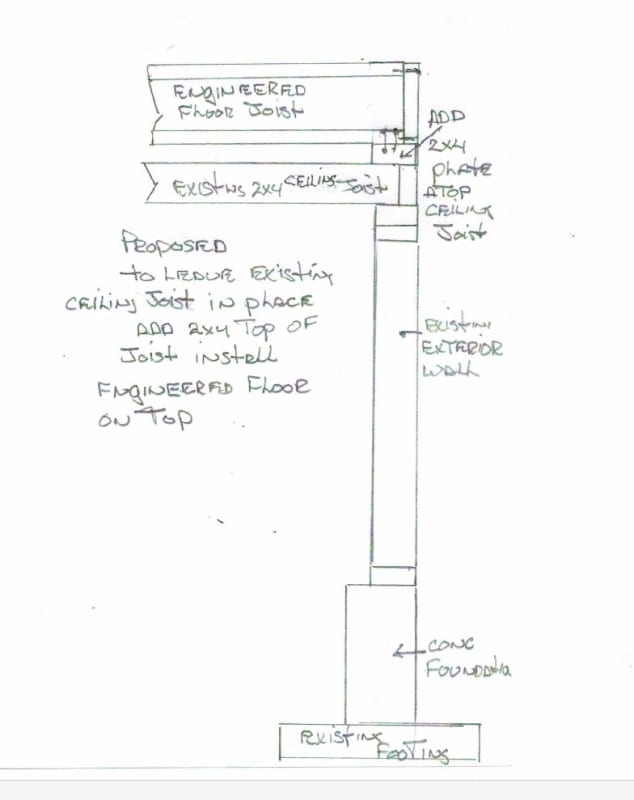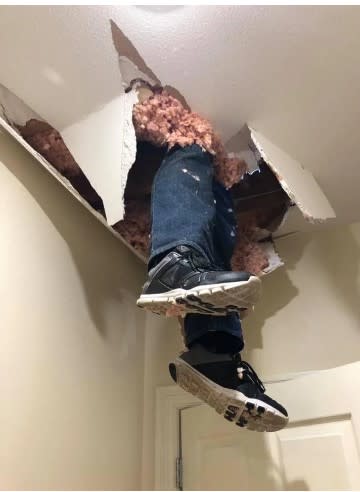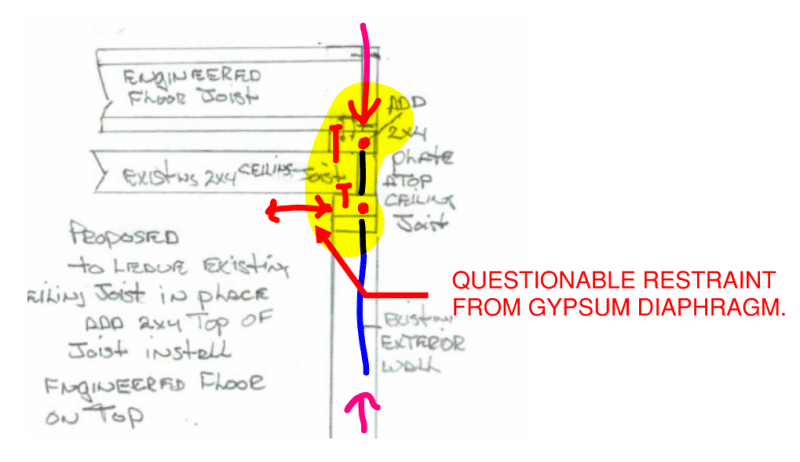Good Morning.
I had a contractor reach out to me about building a second floor addition on top of the first. However, he would like to leave the existing attic joists as is to avoid removing drywall on the floor below.
I've attached a sketch of what he proposes. My question is does adding an additional floor system without removing the old create an additional hinge that needs to be examined ? If so how could this be remediated ? Maybe add thicker sheathing on the outside.
Thanks for your help guys.



